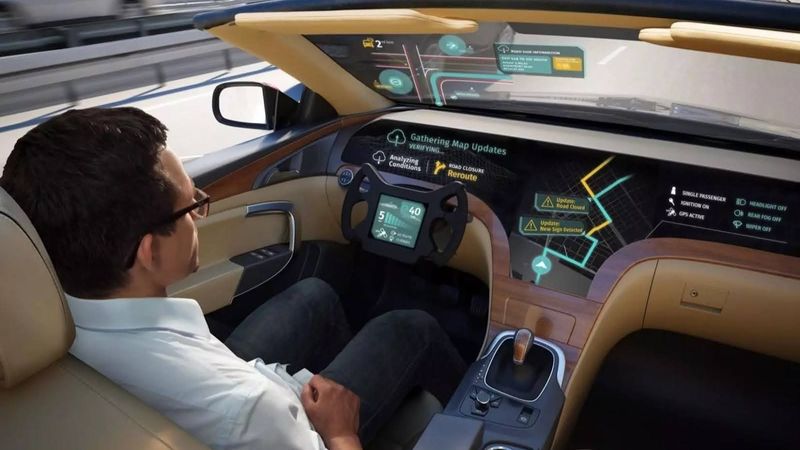Analyzing Human Behavior with Edge AI
Integration of AI human behavioral software with Akida neuromorphic computing can drive machines to understand human behavior.

Credit: Here.com
The significance of analyzing human behavior for cutting-edge applications, such as autonomous vehicles, healthcare, and retail, cannot be overstated. In the past, companies relied on centralized cloud servers, which proved to be both costly and introduced latency issues for crucial tasks.
To address this, businesses have shifted their focus to integrating distributed computing architecture within their infrastructure. Edge artificial intelligence is gaining momentum due to its capability to process data near its source, thereby significantly reducing latency and minimizing the need to transmit sensitive information over the internet. This, in turn, reduces the risk of data breaches and enhances privacy.
Real-time analysis of human behavior has significantly improved decision-making processes. Monitoring driver behavior can greatly enhance road safety. This understanding of human behavior enables companies to develop more intuitive and user-friendly interfaces.
In response to this need, BrainChip and NVISO Group Limited have joined forces to develop an advanced AI-powered system for real-time human behavioral analysis. The system integrates BrainChip's Akida IP and processors, which are based on neuromorphic computing, with NVISO Group's AI software, specializing in analyzing a wide range of human behaviors.
This article will discuss the core technologies that enable BrainChip’s human behavioral analysis solution to operate efficiently.
Brain-Inspired Architecture
Neuromorphic systems are engineered to mimic the neural networks of the human brain, with neurons and synapses as their fundamental units. In contrast to the traditional von Neumann architecture, which separates processing and memory units, neuromorphic systems combine these functions.
BrainChip drew inspiration from this concept to develop its own IP and processor chips based on neuromorphic computing. Thanks to their significant parallelism, these hardware systems can handle many parallel operations, similar to the brain's ability to process multiple tasks simultaneously.
For human behavioral analysis, the BrainChip Akida IP and processors are capable of processing data in real-time, allowing for immediate analysis and response. This is particularly valuable for applications that require quick decision-making, such as driver monitoring systems (DMS) and interactive consumer electronics.
The AI-enabled human behavioral analysis solution uses BrainChip’s engineered highly energy-efficient hardware system, making it well-suited for edge deployments. It is designed for integration within resource-constrained environments, and its efficiency is achieved through event-based processing.
Why neuromorphic computing?
In edge-based applications, generating substantial data can pose significant challenges for cloud processing and global connectivity.
For its hardware systems, BrainChip has introduced a novel neural network architecture known as Temporal Event-based Neural Networks (TENNs). These lightweight neural networks demonstrate superior efficiency in processing temporal data compared to traditional Recurrent Neural Networks (RNN) such as Long Short-Term Memory (LSRM) or Gated Recurrent Units (GRU).

The second-generation Akida neural processor platform has highly efficient 3-dimensional (3D) convolution functions, enabling it to handle compute-intensive tasks on devices with limited memory and battery resources. This enhancement makes it ideal for ADAS applications.
The Akida processors support on-chip learning, allowing the system to adapt and learn from new data without needing to connect to the cloud, crucial for analyzing human behavior. The hardware can be integrated into various devices, making them flexible for deployment across multiple sectors, including retail, healthcare, and automotive.
The Role of AI Software
The jointly developed human behavior analysis solution uses AI software from NVISO Group that can detect and analyze facial expressions, allowing for the determination of emotions. This system monitors users' real-time state by observing head and body pose, eye tracking, and gaze.
The software processes acquired images through preprocessing to enhance data quality and relevance. It leverages various neural networks and machine learning models to extract essential features from the preprocessed images.
By accurately analyzing and responding to human behaviors, the system enhances the user experience, enabling more seamless and intuitive interactions with intelligent devices. Its continuous learning and adaptation to user behaviors ensure personalized and context-aware responses.
NVISO has created an evaluation kit for its human behavior AI SDK, which runs on the BrainChip Akida neuromorphic processing platform. “In our goal to drive machines to understand people and their behaviors, we have partnered with BrainChip to develop a high-performance system that enables efficient and effective human interaction with intelligent systems,” says Virpi Pennanen, CEO of NVISO Group[2].
Conclusion
The integration of AI human behavioral software with Akida neuromorphic computing has led to the development of a system that empowers companies to build intelligent systems. With the increasing presence of autonomous machines, these systems can interact with humans by identifying and interpreting movement using the capabilities of artificial intelligence.
This co-developed human behavioral analysis solution was showcased at the CES 2024 and IFS Direct Connect 2024[1,2].
References
[1] BrainChip. BrainChip Demonstrates Human Behavior Detection at IFS Direct Connect 2024. February 15, 2024. https://brainchip.com/brainchip-demonstrates-human-behavior-detection-at-ifs-direct-connect-2024/. Accessed on May 28, 2024.
[2] BrainChip. BrainChip and NVISO Group Demonstrate AI-Enabled Human Behavioral Analysis at CES 2024. January 5, 2024. https://brainchip.com/brainchip-and-nviso-group-demonstrate-ai-enabled-human-behavioral-analysis-at-ces-2024/. Accessed on May 28, 2024.
